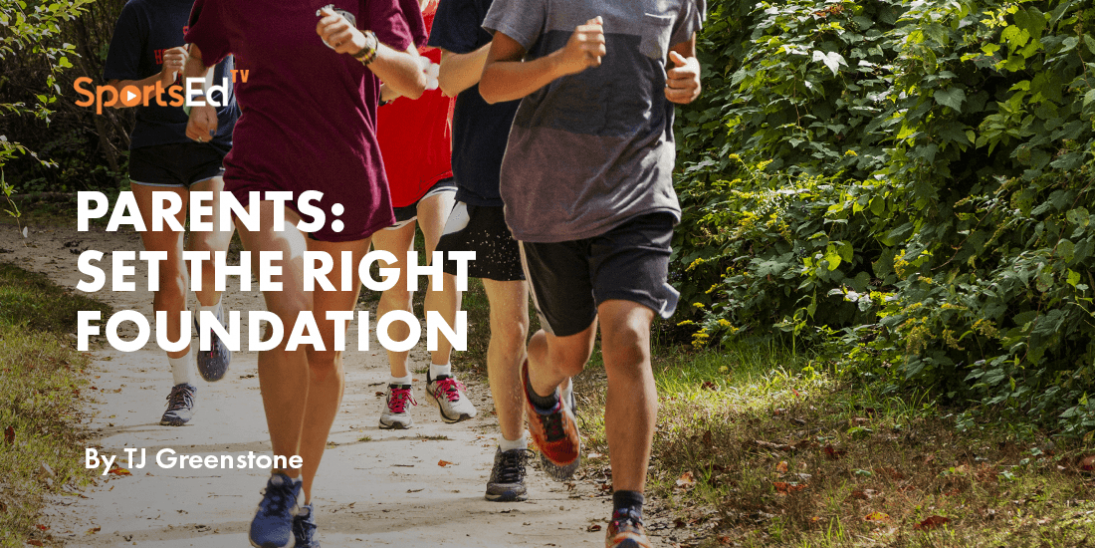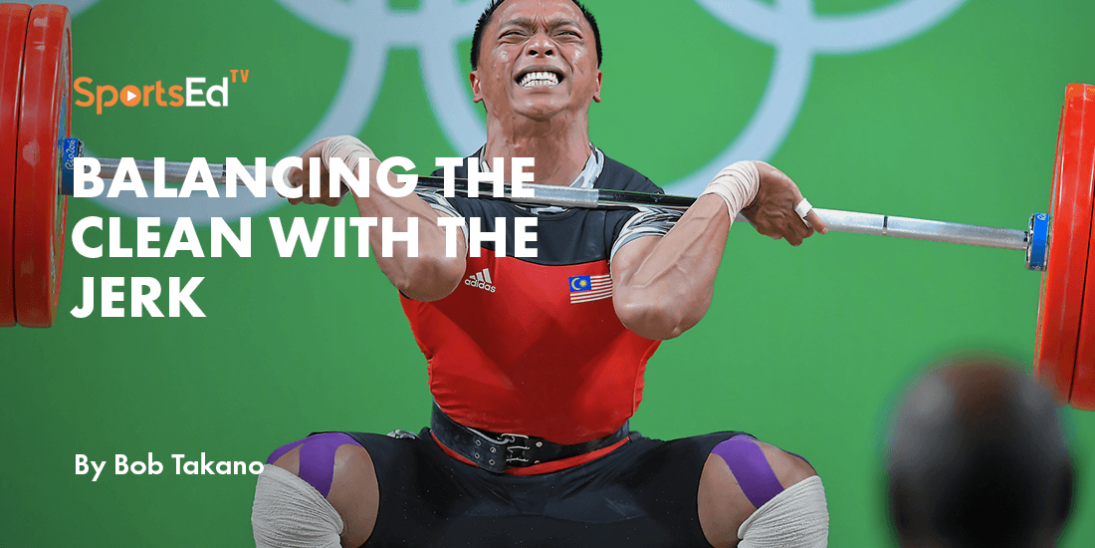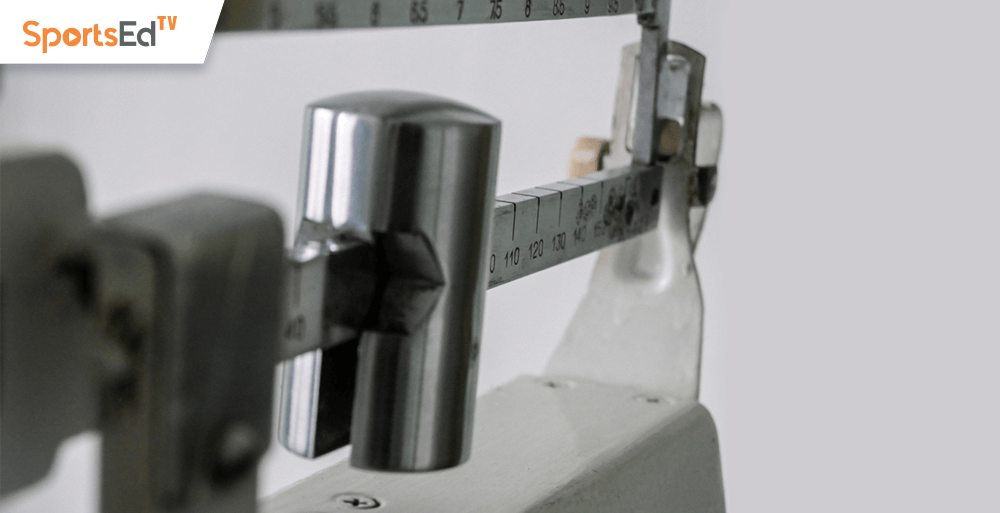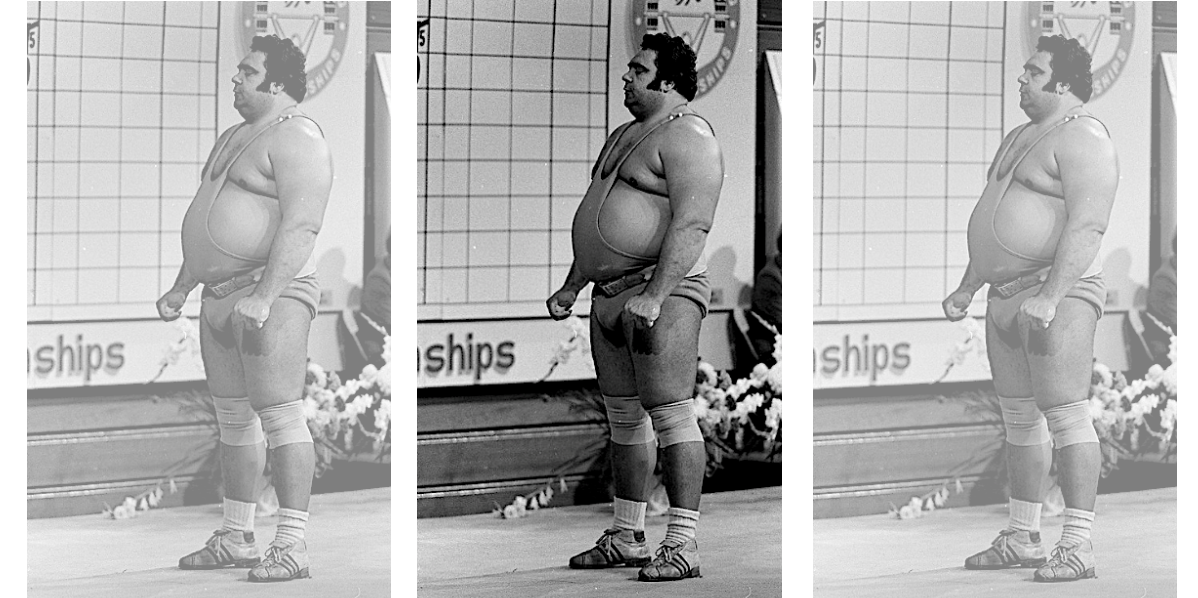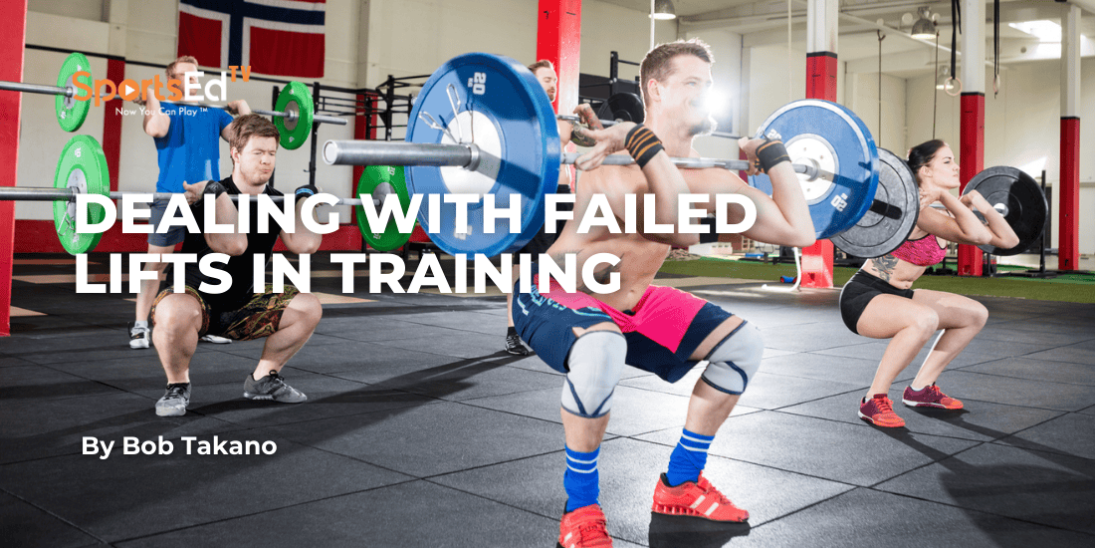Weightlifting
Welcome and thanks for visiting...

Coping with Challenges During the Pandemic: An Interview with Coach TJ Greenstone
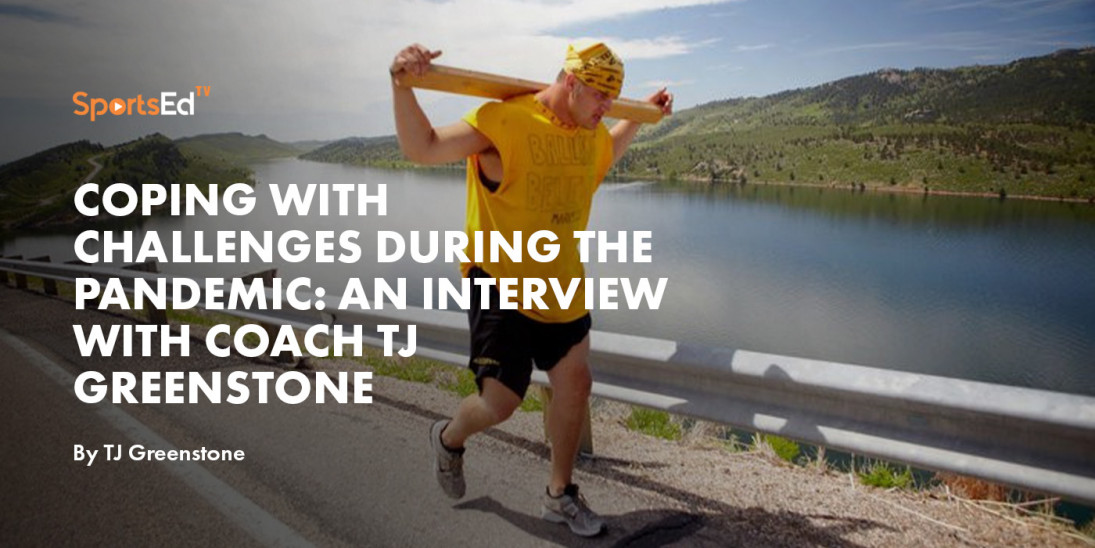
This interview by Harvey Newton features Butler University Assistant Strength and Conditioning Coach (and USAW National Champion) TJ Greenstone discussing the challenges faced by S&C staffs during the current pandemic.
HN: Welcome SportsEdTV viewers to a blog interview with Coach TJ Greenstone. We're going to talk about a number of topics today. TJ is a national champion for USA Weightlifting (superheavyweight), a national level weightlifting coach, a lead instructor for a number of USA weightlifting coaching courses, and he is also is a strength coach at Butler University in Indiana. Coach Greenstone has responsibility for a number of different teams and sports.
HN: Coach, we talked earlier about the impact of the current pandemic conditions and the relationship to strength training of the teams and athletes with whom you're working. Just how do you work under these conditions? You're the first strength coach I've had a chance to really talk with about this. But first, please set the groundwork for who you are, where you've been, and what you've done both as an athlete and as a coach.
TJG: Yeah, it's been quite a year, on many fronts. Thank you so much for having me. I played college football at Vanderbilt University. A segway led to a weightlifting career, where I won the 2018 American Open and the USA Nationals in 2019. I really enjoyed a lot of success as an athlete, while at the same time rising in the strength and conditioning world.
I’ve had a great opportunity to coach football, men's soccer, and volleyball. I've coached at five different schools of various sizes in the last seven years. My wife and I have two little boys, three and one, and one on the way shortly. So, it's been a challenging year. I'm excited to talk about it because this year is really unlike anything that we've ever encountered. In a way, it required an entire shift of the mind, entire shift of logistics, programming, scheduling. Psychologically, it's been quite a year. I'm excited to dive into it with you and hopefully help those that are listening.
HN: I'd like to remind our listeners and viewers that TJ was our first model for much of the weightlifting library on SportsEdTV. He was a little larger in those days. It’s good to see you trimming down; I look forward to seeing you back on the platform. As a strength coach with a lifting background, you probably rely on the lifts, the snatch and the clean & jerk, where possible. But you're not coaching weightlifters at the university level, I don't think.
TJG: Correct. I've changed as I've grown in my career. I was very, very much a weightlifting purist, whether a female was 5’ 3” or a male was 6’ 8”, they were going to snatch, clean and jerk when they came in the room. I've changed a lot from those days. If I do see a good fit, we definitely use variations or the full lifts. For example, with football we used the lifts and some variations. Cleans are a standard of assessment for volleyball. But with men's soccer we don't do them at all, as I only see the players maybe once or twice a week at most. How much time is there for instruction? Is the juice worth the squeeze with a certain population?
HN: There must be a difference between freshmen coming in with a questionable background, in terms of what you have to deal with. I suppose most freshmen are junior varsity at best. You have a chance to groom them, to lead them to a more efficient, safer lifting technique. But it must be a challenge to not be able to start all of them as you’d like.
TJG: There are a lot of really good high school strength coaches. They’ve grown a lot and their knowledge is greater. But for every kid who's really well trained, there's another kid who's never lifted weights. I have them in the same room and need to address both at the same time.
We use a block system. Block Zero is what every freshman comes into. It's my opportunity to teach them to do things the way I want them done. This is how I've seen success. They understand it because we've gone through five prior steps. That first semester for freshmen is learning the basics: learning to properly front rack a barbell, learning how to front squat. We make front squat the absolute king for us early on. This provides a level of comfort for the clean receiving position. This is helpful especially with an immobile athlete who has never before squatted. Many come from a bench press or powerlifting type of program, so catching a clean can be really awkward for them. It takes time, it takes repetitions, it takes a progression.
First-year students are a really fun group because you may get a kid who's never lifted before. You have an absolutely blank slate to work with. By the end of that first semester, he may be cleaning 225lbs. or more. To see that growth so quickly when that mental light bulb just switches, it's a lot of fun.
HN: You mentioned the problems of mobility or bad habits. This is likely with front squats and beginners. It’s a very valuable exercise and something you want to have in place for those who are going to do a squat clean. I imagine you have some players who have a bit of difficulty getting into a front squat position.
TJG: Mobility is a challenge. The bench press is so popular with non-competitive people. When you walk into the average gym you see 100 times more people bench pressing than squatting. This often leads to poor posture, shoulders rolled forward, just really anteriorly dominated. The front rack position can be very difficult for people to get into.
Also, it's amazing how many people that we have that cannot hinge (hip hinge). So many young athletes have never thought about what they're doing while they do it. You ask them to make a correction, they're like, “What do you mean, I need to move my knee here or my toe there?” It pains me how many times in a coaching course I’m challenged to get people to understand the difference between the vertical extension in the pull versus the horizontal force of driving the hips forward. Those two things are completely different and create different outcomes.
Trying to erase bad habits is really difficult sometimes. Sometimes it's a mechanical deal. Sometimes it's a pride deal. I have to say, “Your previous strength coach got you to clean this way. If you want to go further, you're going to have to figure this out and do it my way.”
HN: Coach, I imagine you prefer to have someone who has never done a clean.
TJG: Correct.
HN: While working weightlifting-specific movements we often advise the use of weightlifting shoes, but that's pretty impractical for your teams. Is ankle mobility one of the worst spots you run into?
TJG: Our linemen really do struggle with both the hips and the ankles. A lot of times you see people needing to lift from blocks, elevating their start position. I had problems with ankle flexibility back in the day, too. The positive thing is that it can be improved if it's worked on correctly. This not only makes the athlete safer in the weightroom, but more importantly, it's going to improve performance on the field of play.
HN: I know you went through some ankle concerns in the last year or two. How's that coming along?
TJG: I had a history of high ankle sprains in college and in my weightlifting career. I had a partially torn right Achilles. It's come along really well. I'm getting back into the swing of things more frequently. To go from not being able to squat for almost six months versus now squatting twice a week, I'm pretty excited.
HN: That's great to hear. I look forward to seeing you back on the platform in your new weight class.
As a coach you have a good chance to watch athletes evolve over four years. But what's happening currently with the pandemic? We talked a while ago, and you had a mobile weightroom and were trying to train teams outdoors. That's probably not very possible during the winter in Indiana. What sort of adaptations are you making just to get the kids to train properly?
TJG: We're dealing with weightroom limits as far as how many people can train at the same time. Our groups are limited, so we have to have more groups. Therefore, our total amount of time for training has been decreased. I used to have 75 minutes in the offseason, now I have 50 minutes. Something has to be sacrificed.
In this pandemic, it's the fear of the unknown, the fear that the virus could be anywhere. Our athletes are getting used to training in masks, whether inside or outside. I'm talking playing soccer, running cross-country in masks, heavy power cleans in a mask.
We're limiting the number of contacts, the amount of time people come close.
We've created three separate stations with groups one, two and three all spread out. I have 21 people, so I put seven in each group. We rotate groups throughout the workout. Proper exercise order is out the window; it doesn't matter anymore. Power cleans may be at station one, followed by push-ups at station two, and finally, a split squat at station three.
HN: Our mutual friend Kyle Pierce recently had what he called a “mask meet,” with a number of youngsters. He was surprised at the ease with which these youngsters lifted with masks on and didn't seem to be fazed by it. I'm sure there's some adaptation there, but it's got to be a unique experience. Do you have anyone having to train offsite right now; it seemed like that was the case during the summer.
TJG: Yeah, we did early on. Every day is different. Every school is different. That has made the situation so difficult, with so many universities and colleges doing things differently. The group only allows 10, these people allow 15, this group can work up to 30. Now all our weight training is inside.
It really comes down to the logistical piece and the problem-solving piece. But as far as training virtually or training outside, we were doing some virtual training early on. Coaches need to worry about NCAA rules. Then there's liability. If I'm watching a kid via video doing squats at his house, I don't know what his rack is made of. I don't know if he has collars on the bar. I don't know if he has someone spotting. So, am I willing to take on the liability if he injures himself? No! This is so counterintuitive to what athletics are about, right? University athletics and weightlifting are all about how hard can I push; how intense can I go? Can I exhaust every resource, every option that I have to make sure we’re working intensely enough to win a championship?
The mindset for much of this past year has been: can get our athletes to come in, yet make sure nobody gets Covid? That's number one. Number two, can we make sure nobody gets hurt? We went 180 days from closing up right before Spring break to when they returned and began training as a team. Some kids went home and trained without problems; others couldn’t leave their apartment. Some went home to a familiar gym; others found their gyms closed. We had a volleyball player whose only running was in the street. When you look big picture, these are some strange times!
HN: What's the pandemic impact been on the coaching staff?
TJG: Hypothetically, let’s say I have 20 athletes in the weightroom. There are 110 players on the team. Formerly, I could train 35 - 40 at a time. I had to go from training three groups to five or six groups. Women's soccer is over that limit also. It hasn't been too bad for me since our group limit is a bit higher compared to other universities.
But for some of our other coaches, this has been really stressful because it doubled the number of groups they have to coach. A lot of people say that's what we get paid to do. True, but when you're on the floor for 15 or 20 sessions, it's hard. It's difficult from an energy standpoint. It’s a challenge to deliver the same quality of coaching over and over again.
I always say it's like Burger King versus J. Alexander's (a U.S.-based restaurant chain). You can easily go to Burger King and quickly get a hamburger. Or you can go to J. Alexander's where they spend more time preparing a quality meal. We really pride ourselves on trying to get the best quality coaching interaction with our athletes. Under the current conditions, staff may leave or get furloughed, and that decreases the staff size. You then have to take on more teams. Sometimes a coach decides not to come back the following semester. Right now, the university has a hiring freeze. There's a lot that comes into play right now. It's been a learning experience.
HN: How does all this impact the actual sports’ competitive schedule for the coming year?
TJG: We're a little bit lower-level football than the big boys right now, so all of our season got pushed to the spring. We’ll work a limited schedule, as opposed to traveling a lot. We're going to try to just play teams in this half of the conference that are near us to limit travel. I think everyone understands that revenues are down. If we limit travel, limit hotel stays, limit the number of people traveling on the bus, etc., that all helps. We hope, plan, and train to play in the spring. Our schedules are set and ready to go. Our athletes are hopefully doing the best they can.
HN: Sounds good. You certainly need to have a strategy in place, then you wait to see what happens after that, correct?
TJG: I operate on what I know today. If it changes, I'm ready to change with it. I think people that are rigid and not very flexible aren't great problem solvers. They have really struggled the last eight months with the constant game of “cat and mouse.” One day, you don't have to have a mask on outside. The next day, you have to wear a mask outside. Or you can share the weightroom today, the next day you can't share the weightroom. It’s a constant game of “How do I take care of today? How do I do the best I can?” Otherwise, you end up running all over the place.
HN: You get the mission accomplished regardless of the challenges thrown at you. This is not optimal, but it's a step in the right direction.
TJG: Optimal has been out the window for a long time. I make sure athletes get a chance to stay healthy throughout their competition. We had a pretty solid semester injury-wise. These athletes work really hard, both on the field and in the classroom.
I'm also an adjunct professor, so classroom performance is critical.
HN: How is the current pandemic impacting you?
TJG: Last semester students could elect to go online if they wanted. So, there may be five students online and five watching via Zoom. Someone can log in and watch via video camera. We had two spikes during the semester where the decision was to go completely online. How do I navigate it from a class standpoint and also from a training standpoint? It’s been a challenge! I hope to write a book one day about how life and training were during this time, and that will take up a chapter or two.
At Butler University we’re lucky to have Ralph Reiff in charge of sports medicine. He joined us around 2018. He's a historical figure, an absolute genius in sports medicine. He's so integral to what we do now from a coaching standpoint.
HN: I know you're still training yourself and you’ve done a couple of USA weightlifting coaching courses recently. At one point these courses were going online, but I don't know how that has worked out.
TJG: Recently I had one physical course and I plan to have another in January. If participants weren't comfortable taking the course, they wouldn't sign up. I always offer that I'll wear a mask if they want me to. We make sure there is enough equipment, so people didn't have to share barbells. We sanitize and space things apart. I’ll evaluate conditions in January and may do a few things differently.
People need to understand that there's an inherent risk to gathering. But there's an inherent risk of going to the grocery store. Participants make the decision. The world still has to go on, in my opinion, to a certain extent.
HN: You're a member of the National Strength and Conditioning Association (NSCA) and the Collegiate Strength and Conditioning Coaches Association (CSCCA). I guess there aren't currently any conferences going on. Are those organizations staying in good contact with the coaches?
TJG: Obviously the annual conferences were canceled. They went online and virtual. During quarantine I probably did more networking, more connecting with coaches than I ever had before. We want to share ideas. Strength coaches from five very large universities joined me for a weekly conference call. It was a great opportunity to share ideas and get to know people. There has been a lot of online content, a lot of blog posts, video blogs similar to this, where organizations offer good educational content.
HN: Coach, you've been involved in SportsEdTV since our first weightlifting shoot. One of the reasons I invited you in was I knew your skill level and knew we could get the most out of you that day. We have a large international audience and your How to Clean & Jerk remains one of the top six clips viewed daily.
(https://sportsedtv.com/sport/weightlifting-instructional-videos/how-to-clean-jerk
If you were offering advice to your athletes and to other future weightlifters, how do you incorporate SportsEdTV? What can we do to help further educate viewers?
TJG: I always tell folks: if you want to bench press 400lbs., don’t ask the guy struggling with 225lbs about his training program. I’m confident I can coach our guys to get better because I have a recipe for success. I'm the first to point people toward SportsEdTV because of its quality information. If you want to be the best, learn from the best.
HN: Coach, I hope we can continue to cooperate on joint venture work. Remember, all our sports have drop down menus for people seeking top coaching advice. Top coaches such as yourself can showcase their availability to train others, either in person or through distance coaching. Check https://sportsedtv.com/directory
But what’s the best way for our audience to contact you?
TJG: My Facebook athlete and coach pages are probably the best way to start (www.facebook.com/dreambigliftbig). I'm pretty responsive to that. I do some weightlifting coaching on the side. I had some great mentors; you are a huge part of that. I wouldn't be where I am today without you.
HN: Thank you, Coach. Best wishes for a happy and safe Christmas season, and here’s to a great 2021!

